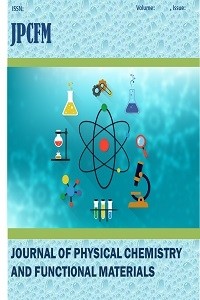DETERMINATION OF THE CHEMICAL EFFECT IN THE LANTHANIDE GROUP OF ELEMENTS USING WAVE DISPERSIVE X-RAY SPECTROMETRY
DETERMINATION OF THE CHEMICAL EFFECT IN THE LANTHANIDE GROUP OF ELEMENTS USING WAVE DISPERSIVE X-RAY SPECTROMETRY
WDXRF X-Ray line, Full width at half maximum (FWHM),
___
- 1- P. Glatzel,U. Bergmann, High resolution 1s core hole X-ray spectroscopy in 3d transition metal complexes-electronic and structural information, Coordination Chemistry Reviews, 2005, 249, 65-95.
- 2- J.H. Guo, S.M. Butorin, N. Wassdahl, P. Skytt, J. Nordgren and Y. Ma, Electronic structure of La2−xSrxCuO4 studied by soft-x-ray-fluorescence spectroscopy with tunable excitation, Phys. Rev. B, 1994, 49, 1376.
- 3- S.M. Butorin, D.C. Mancini, J.H. Guo, N. Wassdahl, J. Nordgren, M. Nakazawa, S. Tanaka, T. Uozumi, A. Kotani, Y. Ma, K. E. Myano, B.A. Karlin and D.K. Shuh, Resonant X-Ray Fluorescence Spectroscopy of Correlated Systems: A Probe of Charge-Transfer Excitations, Phys. Rev. Lett., 1996, 77, 574.
- 4- T.Yoshimuraa, Y. Tamenori, A. Suzuki, R. Nakashima, N. Iwasaki, H. Hasegawae, H. Kawahataa, Element profile and chemical environment of sulfur in a giant clam shell: Insights from μ-XRF and X-ray absorption near-edge structure, Chemical Geology, 2013, 352, 170-175.
- 5- D.B. Hunter, P.M. Bertsch, K.M. Kemner and S.B. Clark, Distribution and Chemical Speciation of Metals and Metalloids in Biota Collected from Contaminated Environments by Spatially Resolved XRF, XANES, and EXAFS, Proceedings of the 9th International Conference on X-Ray Absorption Fine Structure, J. Phys. IV, France 1997, C2-767-771.
- 6- E. Boydaş, E. Orhan, M.G. Boydaş, E. Cömert, Chemical shifts of Ka and Kb1,3 X-ray emission spectra for oxygen compounds of Ti, Cr, Fe, Co, Cu with WDXRF, Procedia - Social and Behavioral Sciences 195 ( 2015 ) 1757 –1761.
- 7- S. Porikli, D. Demir and Y. Kurucu, Variation of Kβ/Kα X-ray intensity ratio and lineshape with the effects of external magnetic field and chemical combination, 2008, Eur. Phys. J. D 47, 315–323.
- 8- S. Nishibu, S. Yonezawa, M. Takashima, J. Fluorine Chem. 2005, 126, 1048.
- 9- H.S. Kainth, R.Singh, J.S. Shahi, T. Singh, Study of chemical shift in Ll and Lƞ X‐ray emission lines in different chemical forms of 48Cd and 50Sn compounds using WDXRF technique, X-Ray Spectrometry, 2018, 47(2), 116-126.
- 10- S. Raj, H.C. Padhi, M. Polasik, Influence of chemical effect on the Kβ-to-Kα x-ray intensity ratios of Cr, Mn and Co in CrSe, MnSe, MnS and CoS, Nuclear Instruments and Methods in Physics Research Section B, 160(4), 443-448.
- 11- S. Porikli, Y. Kurucu, Effect of an External Magnetic Field on the Kα and Kβ X-Ray Emission Lines of the 3d Transition Metals, Instrumentation Science&Technology, 2008, 36(4), 341-354.
- 12- H. Baltas, B. Ertugral, C. Kantar, S. Sasmaz, E. Yılmaz and U. Cevik, Kβ/Kα X-Ray Intensity Ratios for Co, Ni, Cu, and Zn in Phthalocyanines Complexes, Acta Physica Polonica, 2011, 119(6), 764-768.
- ISSN: 2651-3080
- Yayın Aralığı: Yılda 2 Sayı
- Başlangıç: 2018
- Yayıncı: Niyazi BULUT
Sevil PORİKLİ DURDAĞI, Aslıhan TAŞPOLAT
MEDICAL AND BIOLOGICAL APPLICATIONS OF X-RAY FLUORESCENCE METHOD FOR ELEMENTAL ANALYSIS
Grafting of Cellulose: Synthesis and Characterization
TD-DFT Study on the Toxicity Prediction of Thiopental Sodium
Evalution of Salt Crystallisation Effects on Artificial Marble
Didem EREN SARICI, Nilgün KIZILKAYA, Engin ÖZDEMİR, Fadime POLAT
Linear Reaction of Ca Atom with HCl Molecule in the Ground Electronic State: Hartree-Fock Method
